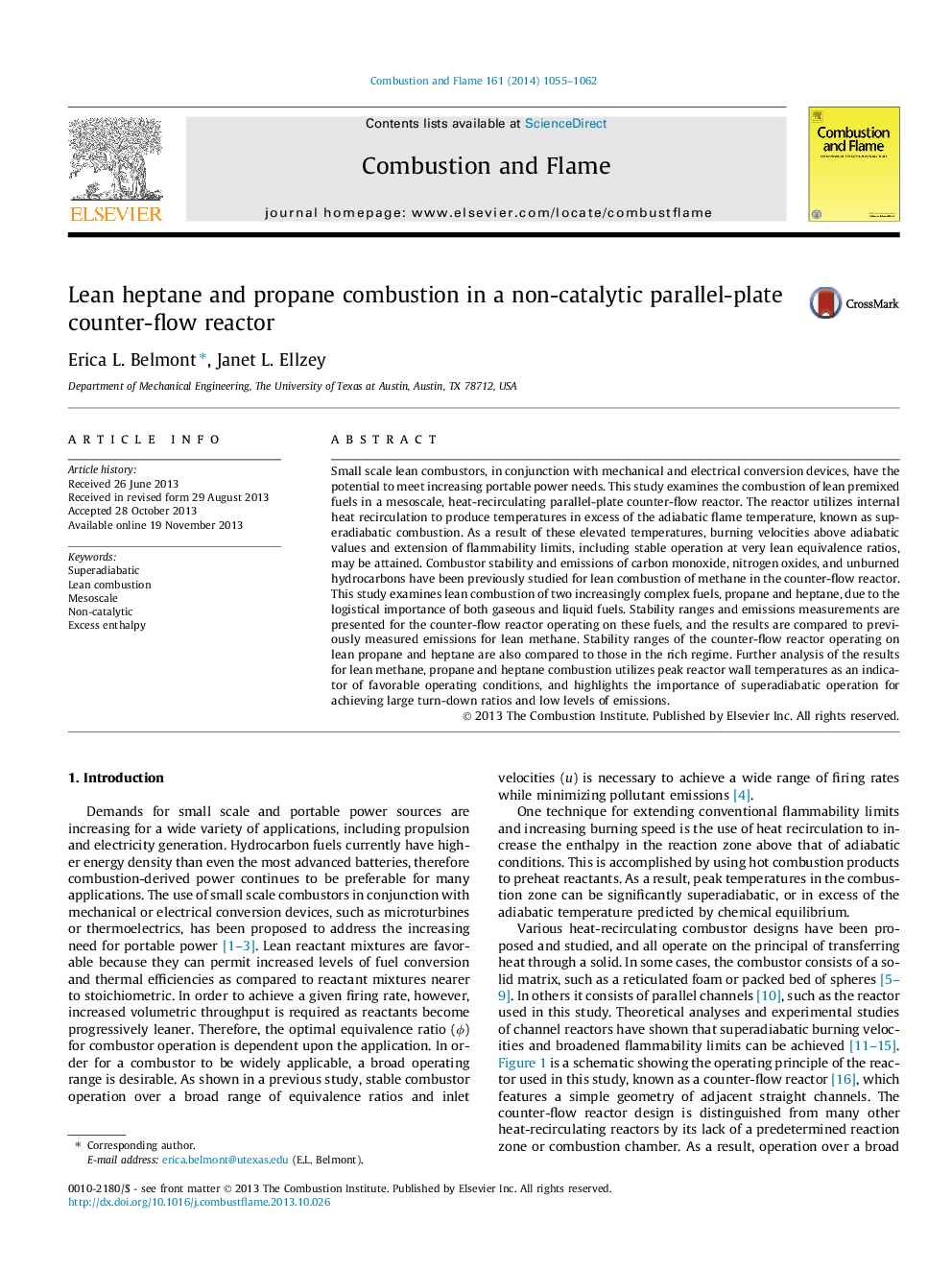| Article ID | Journal | Published Year | Pages | File Type |
|---|---|---|---|---|
| 168715 | Combustion and Flame | 2014 | 8 Pages |
Small scale lean combustors, in conjunction with mechanical and electrical conversion devices, have the potential to meet increasing portable power needs. This study examines the combustion of lean premixed fuels in a mesoscale, heat-recirculating parallel-plate counter-flow reactor. The reactor utilizes internal heat recirculation to produce temperatures in excess of the adiabatic flame temperature, known as superadiabatic combustion. As a result of these elevated temperatures, burning velocities above adiabatic values and extension of flammability limits, including stable operation at very lean equivalence ratios, may be attained. Combustor stability and emissions of carbon monoxide, nitrogen oxides, and unburned hydrocarbons have been previously studied for lean combustion of methane in the counter-flow reactor. This study examines lean combustion of two increasingly complex fuels, propane and heptane, due to the logistical importance of both gaseous and liquid fuels. Stability ranges and emissions measurements are presented for the counter-flow reactor operating on these fuels, and the results are compared to previously measured emissions for lean methane. Stability ranges of the counter-flow reactor operating on lean propane and heptane are also compared to those in the rich regime. Further analysis of the results for lean methane, propane and heptane combustion utilizes peak reactor wall temperatures as an indicator of favorable operating conditions, and highlights the importance of superadiabatic operation for achieving large turn-down ratios and low levels of emissions.
